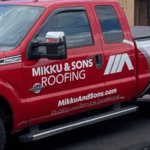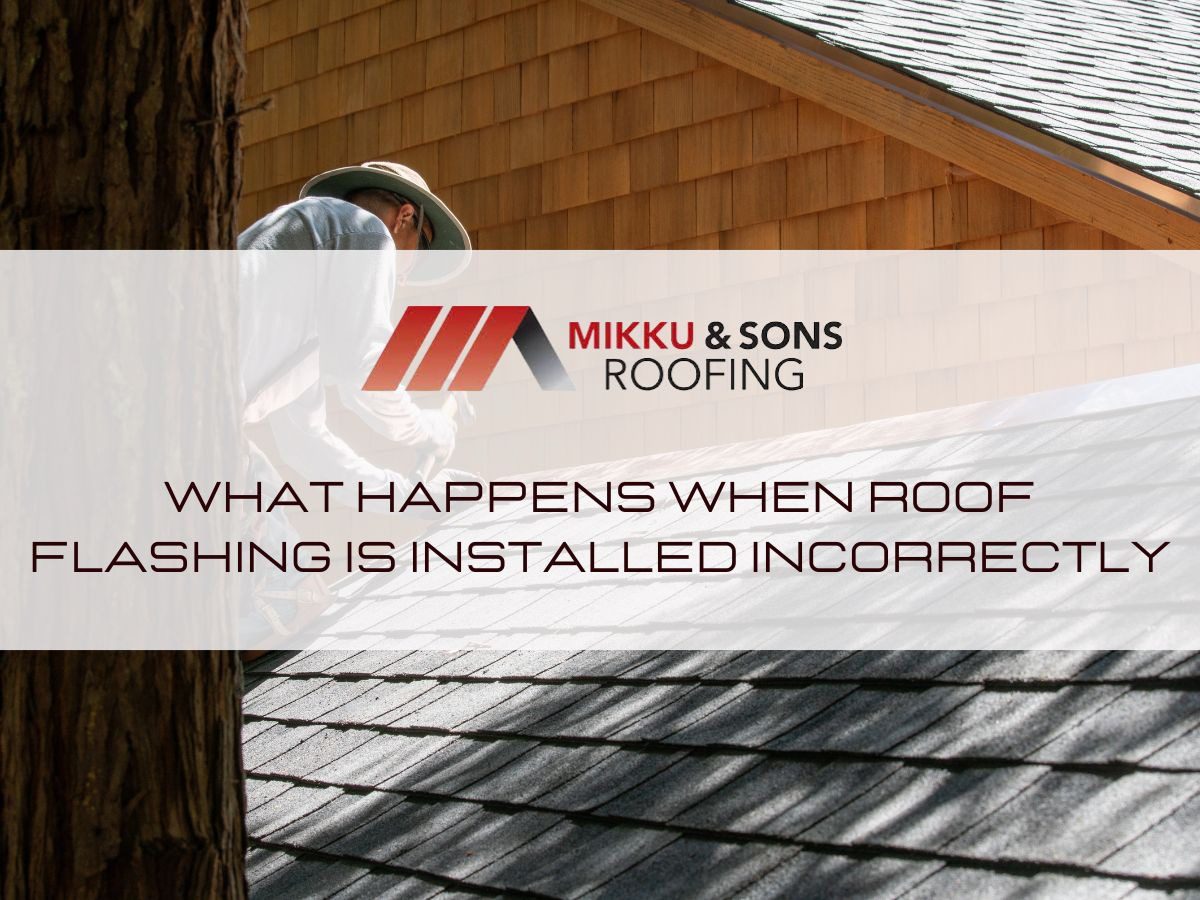
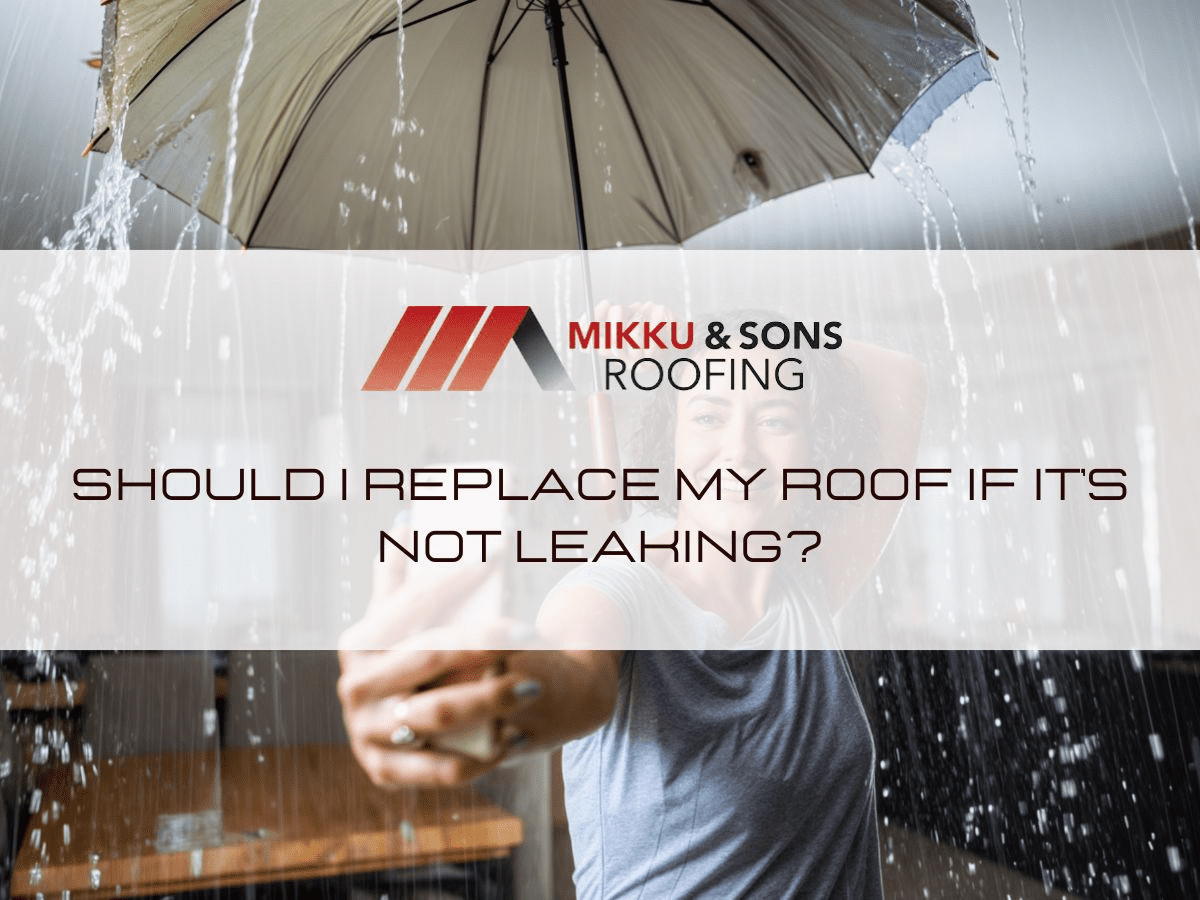
Homeowners often face the dilemma of whether a roof that appears intact but has aged should be replaced before any major issues arise. The decision carries both financial and practical weight, as a roof represents one of the most critical elements of a home’s protection.
Should I replace my roof If It's not leaking? Roofs can deteriorate gradually due to weather exposure, material fatigue, and installation quality, even without visible signs of leaking. Waiting for water intrusion often means waiting until damage has already occurred, which may result in costly repairs beyond the roof itself.
A thoughtful assessment of roof condition considers age, material type, and subtle signs of wear that are not always visible to the untrained eye. Evaluating the long-term implications helps ensure that homeowners avoid unnecessary risks while making the most of their investment.
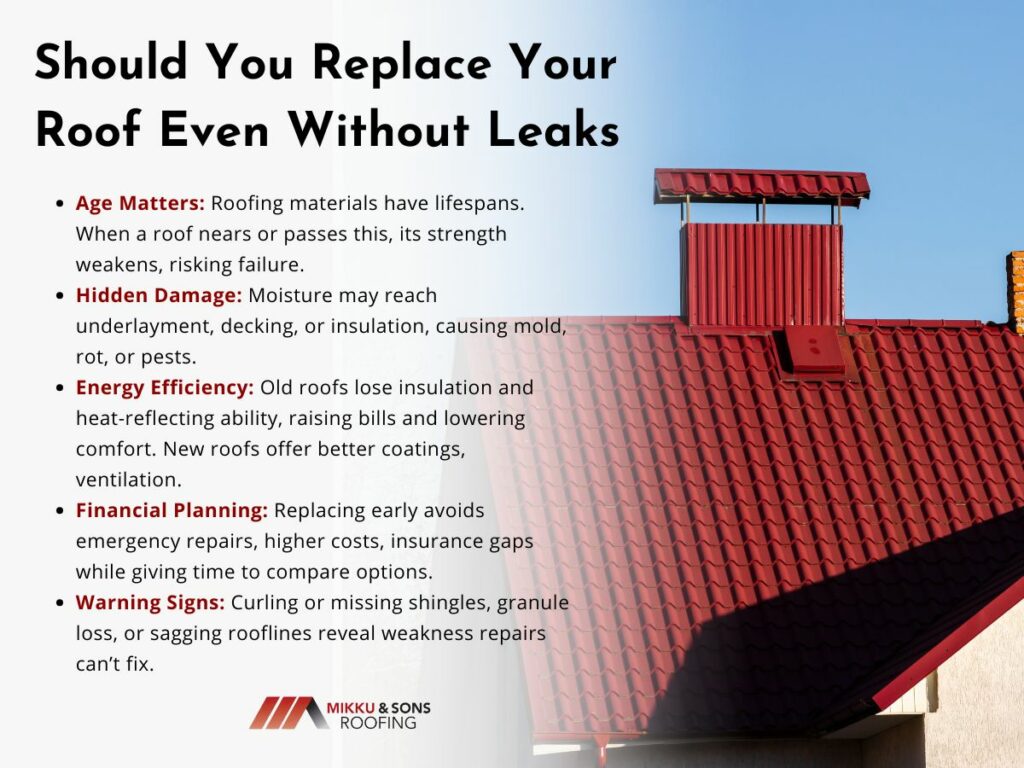
A roof is more than a surface barrier against rain; it serves as a system that regulates temperature, directs water away, and preserves structural integrity. Its durability directly influences energy efficiency and overall home value.
Even if no leak is present, deterioration can reduce performance in ways less obvious than water damage. Understanding these subtleties allows homeowners to make informed decisions before emergencies dictate action.
| Roofing Material | Average Lifespan | Approximate Cost per Square Foot (Installed) | Notable Advantages |
| Asphalt Shingles | 20–30 years | $3 – $6 | Affordable, widely available, easy to repair |
| Metal Roofing | 40–70 years | $7 – $12 | Long lifespan, fire-resistant, energy-efficient |
| Wood Shingles/Shakes | 25–40 years | $6 – $9 | Natural appearance, eco-friendly options |
| Clay or Concrete Tile | 50–100 years | $10 – $15 | Extremely durable, great for hot climates |
| Slate | 75–150 years | $15 – $25 | Premium durability, elegant appearance |
| Synthetic/Composite Roof | 30–50 years | $7 – $10 | Lightweight, versatile, sustainable options |
Every roofing material has an expected lifespan, with asphalt shingles averaging 20 to 30 years and metal roofs lasting 40 to 70 years. If a roof is approaching the end of its projected service life, replacement may be a proactive investment.
A roof may not show leaks but could already have compromised underlayment or brittle shingles that weaken during seasonal stress. These conditions leave the home vulnerable to sudden failure in severe weather.
Professional inspections can identify age-related wear that is not visible from ground level. This evaluation can prevent unexpected issues by highlighting areas of weakness early.
Water does not always announce itself through visible leaks in the ceiling. Moisture can infiltrate decking or insulation layers long before it appears indoors.
Over time, undetected dampness may foster mold, rot, or pest infestations that quietly undermine structural soundness. Such conditions are more expensive to correct than a timely roof replacement.
Infrared scanning and moisture detection tools help professionals uncover these hidden risks. Acting before visible symptoms appear protects both the building and its occupants.
Aging roofs may lose their ability to reflect heat or retain insulation, which impacts energy bills. Even without leaks, this inefficiency adds long-term costs.
Improved roofing materials today include reflective coatings, better ventilation systems, and enhanced insulation options. Replacing an old but non-leaking roof may lead to significant savings over time.
Investing in energy-efficient roofing can also increase property value. Homebuyers often prioritize homes with recently upgraded roofs for both safety and efficiency.
Replacing a roof is a significant expense, and many homeowners hesitate until a problem forces the investment. However, delaying replacement often raises costs beyond the initial roofing project.
Evaluating financial timing involves comparing immediate replacement with the risk of unexpected damage and emergency repairs. Proper planning offers control and cost savings.
A sudden leak after years of unnoticed wear can lead to emergency service calls, damaged interiors, and ruined belongings. These unplanned costs can exceed what proactive replacement would have required.
Insurance may not always cover damage caused by neglect or deferred maintenance. This leaves the homeowner with higher out-of-pocket expenses.
Addressing roof replacement on your own schedule allows time to compare estimates and financing options. Emergencies rarely provide that flexibility.
Replacing a roof before it fails can boost curb appeal and resale potential. Buyers often view a new roof as one less major expense to worry about in the near future.
Appraisers also factor roof condition into property value assessments. An updated roof can raise the market price of a home beyond the replacement cost itself.
This makes proactive replacement not only a maintenance choice but also an investment in future financial stability.
Many roofing contractors offer financing or staged payment options that reduce the burden of upfront costs. Planning ahead makes it easier to integrate the expense into long-term budgeting.
Federal and state programs may also provide tax credits or incentives for installing energy-efficient roofing materials. Taking advantage of these opportunities reduces net costs.
Homeowners gain peace of mind knowing the investment was strategically planned rather than forced by sudden failure. Financial foresight ensures a smoother process.
Visible leaks are only one of many indicators that a roof requires attention. Several warning signs may appear years before water enters the interior.
Addressing these early signals can prevent widespread damage and extend the home’s overall durability.
Shingles that curl, crack, or go missing expose underlayment to direct sun and precipitation. Even small gaps accelerate deterioration of the roof system.
These defects indicate the roof no longer provides full coverage against weather. Repairing isolated shingles may help temporarily but often signals the need for broader replacement.
Wind and storms exacerbate weak areas, quickly turning a minor flaw into a structural vulnerability. Identifying this trend early prevents larger failures.
Asphalt shingles naturally lose granules over time, but heavy accumulation in gutters suggests accelerated breakdown. Without this protective layer, shingles deteriorate rapidly.
Granule loss reduces the roof’s resistance to UV rays and weather extremes. The surface becomes brittle, increasing the chance of cracks.
Inspecting gutters and downspouts regularly reveals early signs of granule accumulation. This insight helps gauge when replacement is more cost-effective than repairs.
A sagging roofline indicates potential problems in decking, supports, or foundation alignment. Such changes signal more serious issues than cosmetic wear.
Structural movement may result from long-term water absorption, even if leaks never reached interior spaces. Ignoring sagging compromises overall safety.
Professional assessment is essential when sagging appears. Immediate replacement may be the only safe option.
A trained roofing professional provides insight beyond what a homeowner can see from ground level. Inspections combine visual checks with advanced tools to detect vulnerabilities.
Relying on expert evaluation ensures replacement decisions are based on evidence rather than guesswork.
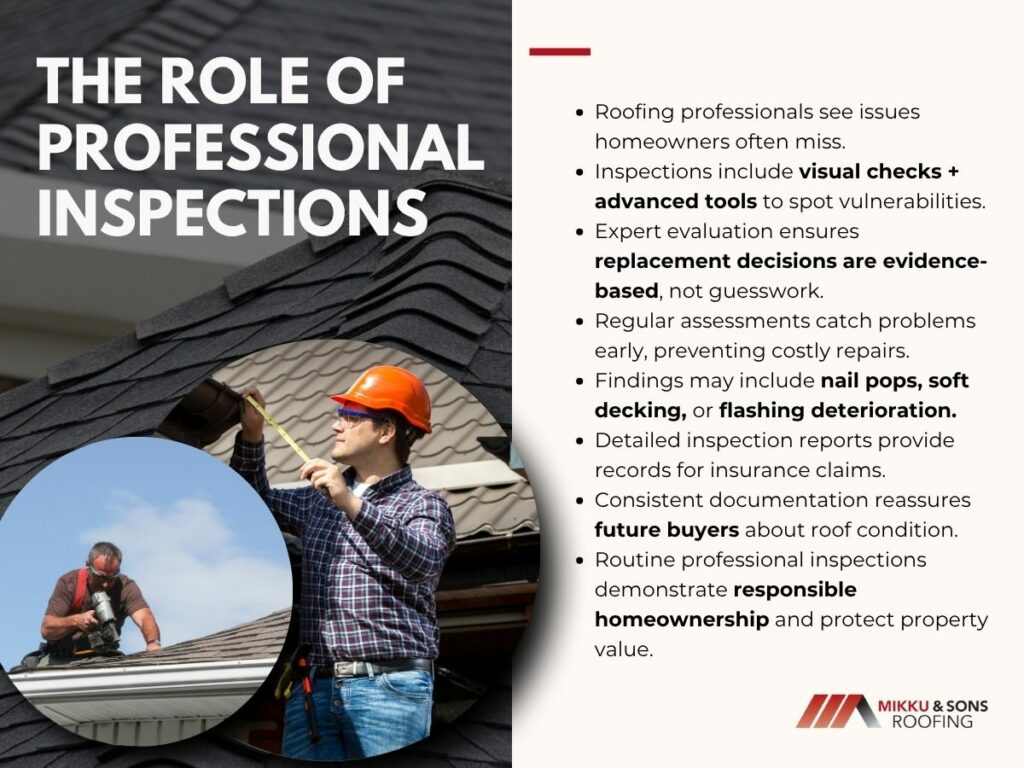
Regular inspections allow homeowners to monitor roof health throughout seasonal changes. This approach helps catch issues at their earliest stages.
Professionals look for subtle indicators such as nail pops, soft decking, or deteriorating flashing. These findings often remain unnoticed until they escalate.
Documented inspection reports provide valuable records for insurance or future buyers. Consistent maintenance records demonstrate responsible homeownership.
Not all roofing contractors offer the same level of expertise, so careful selection is crucial. Homeowners should verify licensing, insurance, and references before committing.
Experienced professionals provide not only installation but also ongoing support for long-term durability. Their knowledge of materials and climate conditions ensures better results.
Clear communication and transparent contracts protect homeowners from hidden costs. Trustworthy contractors emphasize safety and quality workmanship.
Homeowners often wrestle with the decision of repairing isolated roof issues versus committing to a full replacement. The right choice depends on factors such as the age of the roof, the extent of the damage, and long-term financial considerations.
Repairs may resolve short-term problems at a lower cost, but they rarely extend the overall lifespan of an aging system. Replacement, although more expensive initially, can eliminate recurring issues and improve home efficiency.
| Factor | Repair (Short-Term Fix) | Replacement (Long-Term Solution) |
| Upfront Cost | Low to moderate | High initial investment |
| Longevity of Solution | Temporary, may last a few years | 20–70+ years depending on materials |
| Risk of Future Repairs | High if underlying issues persist | Low with proper installation |
| Impact on Home Value | Minimal | Significant boost in resale value |
| Energy Efficiency | Unchanged | Improved with modern materials |
| Best For | Localized or minor damage, newer roofs | Aging or severely damaged roofs, resale prep |
If the roof is relatively young and damage is confined to a small area, targeted repairs may be the most cost-effective solution. Missing shingles, minor flashing damage, or localized leaks can often be addressed without overhauling the entire structure.
A roof under warranty should typically be repaired first, since the coverage may offset costs and preserve replacement eligibility later. Repairing smaller problems under warranty protects both budget and roof lifespan.
In these situations, professional guidance ensures repairs are thorough and prevent future complications. A skilled roofer can confirm whether damage is isolated or part of a larger issue.
When roof problems spread across multiple areas, repeated repairs become a short-term patch rather than a real solution. Curling shingles, widespread granule loss, or sagging structure all suggest the roof is nearing the end of its life.
Leaks that reappear despite multiple fixes often indicate deeper damage below the surface. Addressing symptoms without replacing the entire system leaves the home vulnerable to repeated exposure.
In these cases, replacement not only resolves the immediate issues but also resets the lifespan of the roof, providing stability for decades. Homeowners gain assurance that their investment will last.
Advances in roofing technology have transformed the industry, offering homeowners more durable, efficient, and environmentally conscious options. These innovations often make roof replacement an investment that extends beyond protection to added value and comfort.
Modern materials and systems are designed to perform better under harsh conditions and to last significantly longer than traditional products. Homeowners who explore these innovations can often justify replacement even before obvious wear or leaks appear.
Cool roof technology uses reflective materials that reduce heat absorption, lowering indoor temperatures and energy costs. This feature is especially beneficial in warmer climates where air conditioning expenses dominate household budgets.
Shingles, tiles, and membranes with reflective coatings can significantly extend roof life by minimizing thermal stress. Reducing heat also eases strain on HVAC systems, lowering maintenance costs over time.
Investing in cool roof technology provides both immediate comfort and long-term savings. Many municipalities also encourage installation through rebates or energy efficiency incentives.
Roofing systems can now be designed to accommodate solar panels seamlessly, or even incorporate photovoltaic materials directly into shingles. This integration eliminates the bulky appearance of traditional solar arrays while still generating clean energy.
Solar-ready designs make future upgrades easier, giving homeowners flexibility without structural modifications. Built-in solar shingles blend appearance with function, creating roofs that both protect and power the home.
These technologies align with sustainability goals while lowering energy bills. Homeowners investing in such systems often find property values increase as buyers prioritize renewable energy features.
Innovations in composite, recycled, and engineered materials provide stronger, lighter, and more environmentally responsible roofing options. These alternatives often outperform traditional asphalt in both lifespan and resilience.
Metal, synthetic slate, and engineered shingles resist fire, wind, and impact better than many older systems. Their durability makes them attractive for regions prone to storms or wildfires.
Eco-friendly roofing choices also reduce waste and may qualify for green building certifications. Replacing an older roof with sustainable materials benefits both the homeowner and the environment.
Roof replacement is a significant investment, and even with careful planning, complications can arise that disrupt the process. Homeowners who understand potential challenges are better prepared to navigate them without unnecessary stress.
Unexpected structural damage hidden beneath old materials can extend timelines and increase costs. Weather delays, improper installation techniques, or poor material handling may also compromise results.
Hiring an experienced contractor reduces the likelihood of mistakes such as inadequate ventilation, uneven shingle alignment, or improper flashing. Careful selection of materials and oversight of the process help prevent costly repairs down the road.
